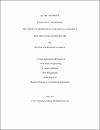| الملخص | Produced water generated during oilfield processes is considered as a major problem that requires solving due to its high salinity and pollutant contents. Electrocoagulation is one of the promising processes for produced water treatment. In this study, steel slag was used as an additional coagulant in the electrocoagulation process for the produced water treatment. The impact of current density, reaction time and the amount of added steel slag were investigated. For a current density of 10 mA/cm2 at a 10 minute reaction time, it was found that the slag sample had a total suspended solids removal of 90% compared to 55.7% for the pure sample. As for the turbidity, the slag sample showed an 85.9% removal, and the pure sample showed an 80.1% removal. The oil and grease removal percentage were almost the same for the sample with and without the slag at 98.9% removal. For the reaction time, it was found that as the reaction time increases the percentage removal for the total suspended solids and turbidity increases to a certain extent. The optimum removal percentage was obtained at a reaction time of 30 minutes. It was found that the slag sample had a 94.8% and a 92.5% total suspended solids and turbidity removal percentages, respectively, while the pure sample had a lower removal percentage of 90% and 90.3%, respectively. The oil and grease removal percentage were similar for both samples where it was 98.6% for the slag sample, and 98.9% for the pure sample. The impact of the amount of added slag was studied for 3 different concentration: 5g/L, 10g/L, and 15g/L. It was found that the optimum removal percentage of suspended solids, turbidity, and oil and grease were 83%, 55%, 96.5%, respectively, using a slag weight of 5 grams. |


